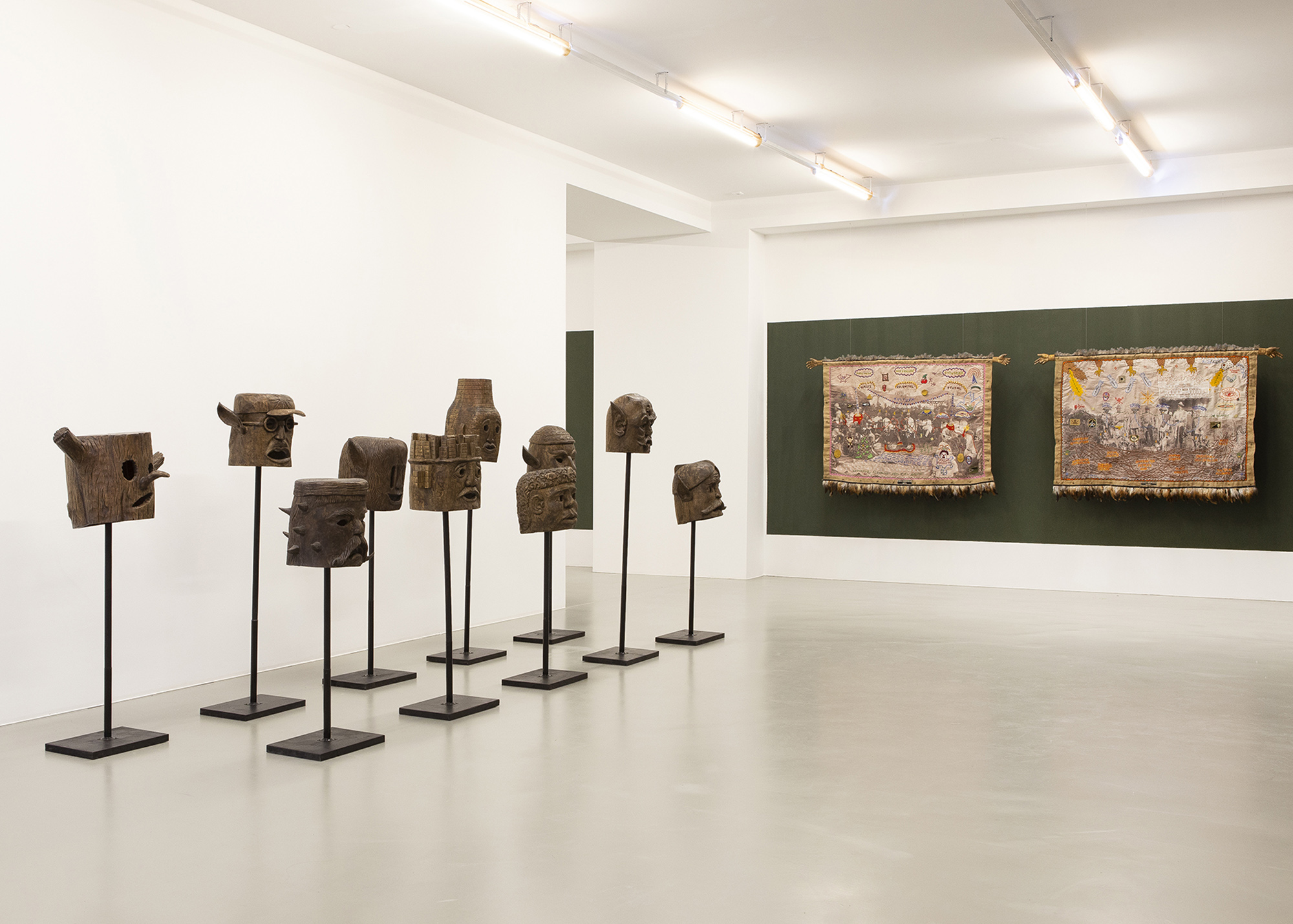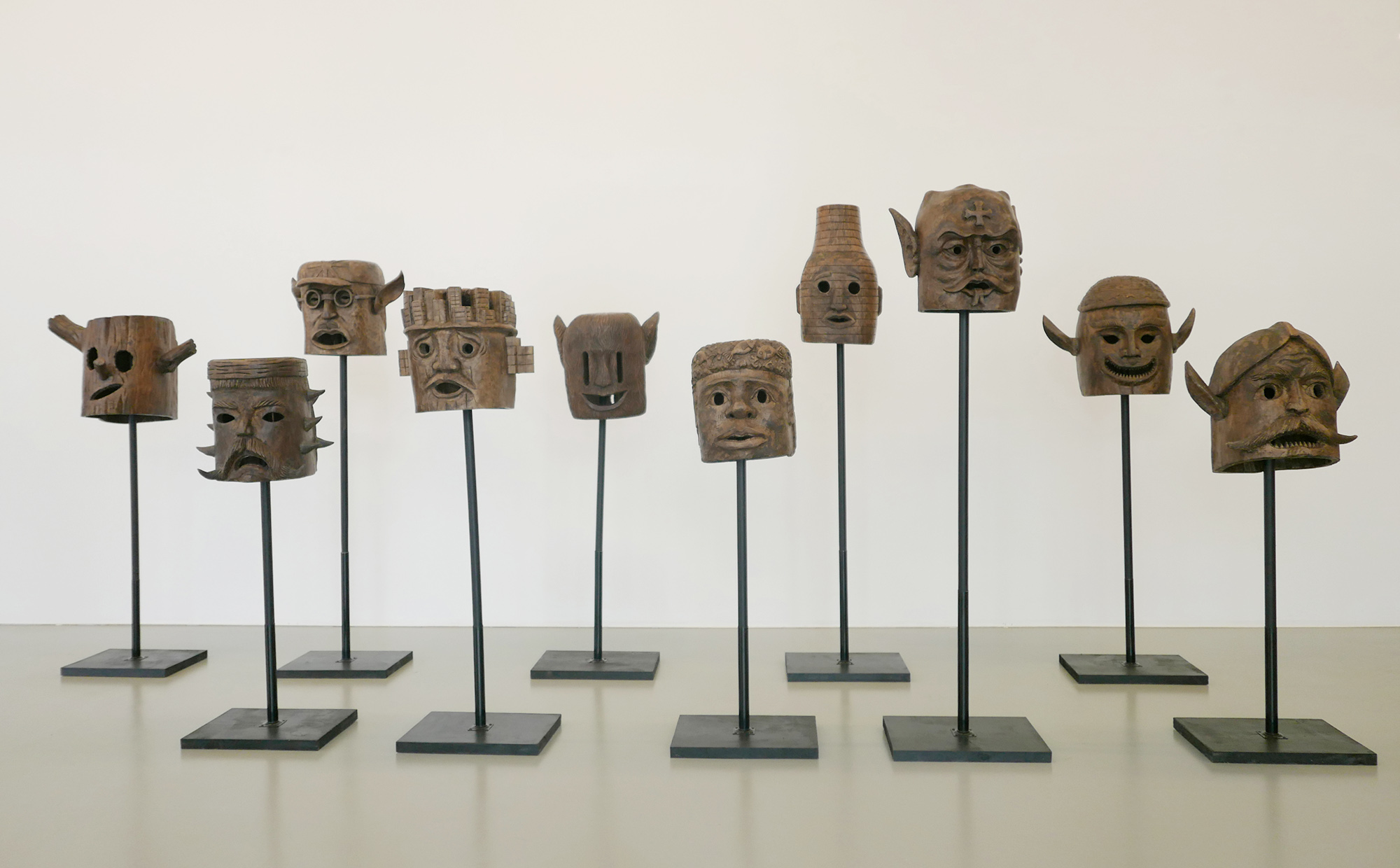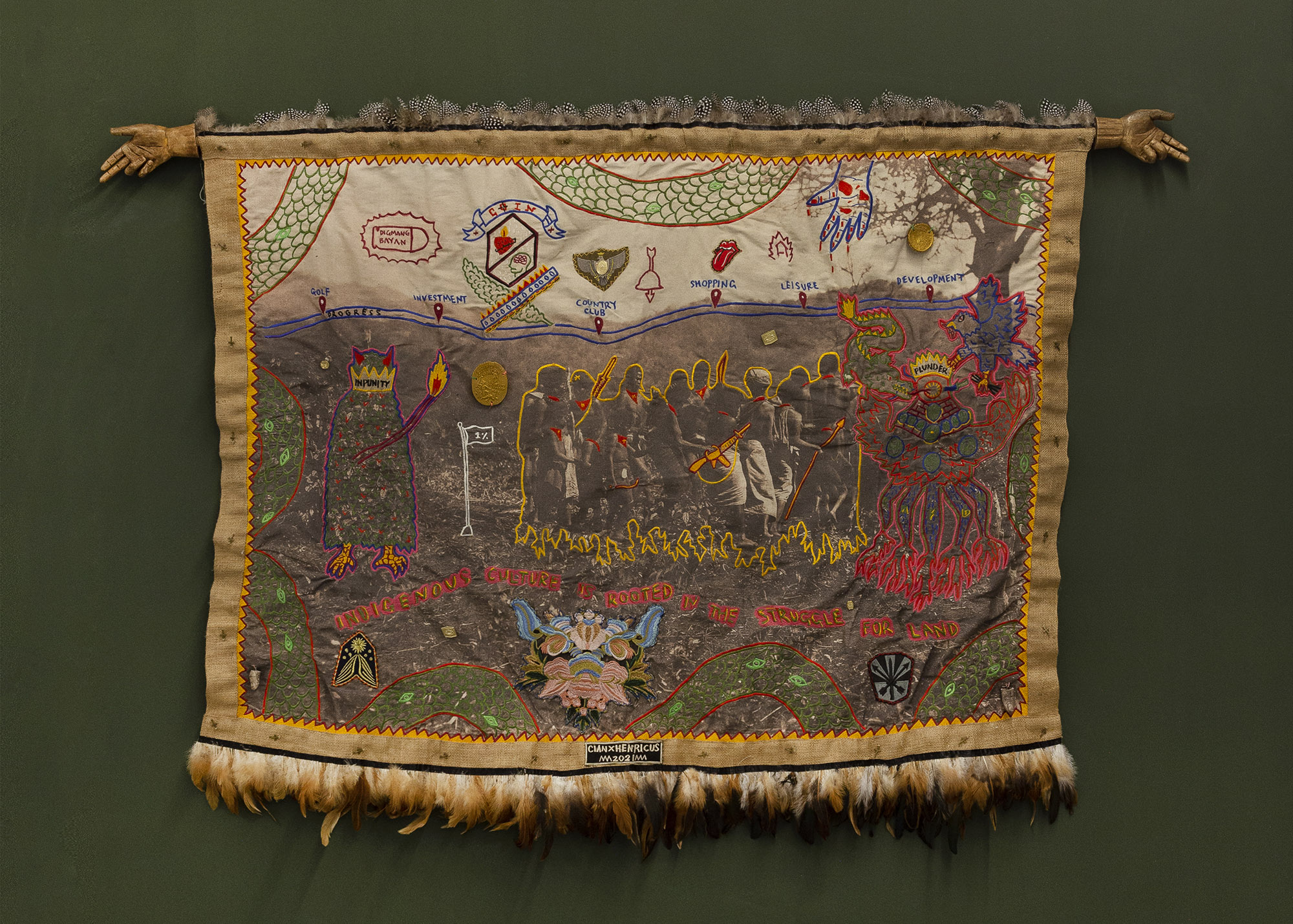Fabulous Exploits of the Far East presents four series of works that reflect and respond to the legacies of colonialism and the current semi-feudal and semi-colonial state of the Philippines.
Archetypes of the Semi-Colony (2017), a collaboration with Bellas Artes Projects, is a series of sculptures in the form of outsized wooden masks. Conceived both as a form of storytelling and an emblem of protection, each mask reflects upon an issue facing the indigenous Aeta in Bataan, who have been subjected to violent landgrabs that have stripped them of their homes, livelihoods, and ancestral ties. Each sculpture personifies episodes and chapters of the colonial history of this region.
A series of assemblages entitled Terra Rationarium (2018) examines systemic oppression on a more personal and intimate scale. Shaped like houses, these objects reconfigure microscopic life-worlds into theatrical depictions of cruelty (ranging from highly local to supranational) bound together by exploitative practices of hegemonic neo-imperial powers like mineral extraction, monocrop agriculture, cheap labor, militarization, and the market of surplus. Each assemblage encapsulates different forms of slavery, which according to geographer Jason Moore are “internal and external frontiers that snake their ways into our web of life.”
In the series Insidious Imperial Insignia (2020), Dayrit adopts a practice of counter cartography to revise historical and political narratives. A collage of colonial maps forms the background of these works, which bear painted seals that reference military bodies such as the Philippine Military Academy, Armed Forces, and Navy.
Natural Histories of Struggle (2021), made in collaboration with RJ Fernandez and Henry Caceres, comprises seven new textile works that draw upon the archive of American zoologist and colonial administrator Dean Conant Worcester. Worcester’s photographs are printed upon textiles and embroidered with texts, emblems, and adornments, thereby opening up the original archival photographs as an arena to reframe power-relationships and inscribe counter narratives within the colonial history of the Philippines.
With the support of:
Stiftung Kunstfonds and NEUSTART KULTUR-Programm, Germany
FABULOUS EXPLOITS OF THE FAR EAST
Cian Dayrit’s Fabulous Exploits of the Far East draws from Amado Guerrero’s analysis of the semi-colonial and semi-feudal conditions in the Philippines as discussed in his seminal work, Philippine Society and Revolution, published in 1971. The exhibition visualizes the dynamics of Philippine society as a bastion for the longest-running protracted people’s war against puppet regimes and their subservience to imperialist states and neoliberal policies while inviting discourse, engagement, and self–criticism to look for one’s position in the process of the struggle.
At the same time, Dayrit interrogates colonialism, power, and the establishment of imperialist identities as presented in Frantz Fanon’s The Wretched of the Earth (1961). The totalizing effects of colonialism and the necessity for the colonized to overcome the alienation produced by systemic oppression are at the core of Dayrit’s four series of works that respond to these exigencies. Recalling documentation that cites an American military officer during the pre- commonwealth era who described Filipinos as “fabulous exploits,” the exhibition examines the identities forced upon colonial subjects by ruling powers.
Contemplating the essence of mapping as a tool to orient and navigate these contradictions and dichotomies, Dayrit sets out to identify the movements that had given colonialism its form and historical content through sculptures, installations, and textile works that unpack and address the inner workings of imperialist plunder and its actual and direct effect on people while foregrounding shared cultural, economic, and political realities. Hence, the ugliness of these issues is materialized through charming and intentionally aesthetically appealing objects that tread the line between sarcasm, humor, and wit to analyze and exorcise the oppressor.
Fabulous Exploits of the Far East proposes waypoints to stand and emanate from colonized spaces and states of affairs, visualizing these contradictions as a way of confronting oneself and all of the remaining oppressive structures. The colonized body never transforms to become unrestrained, instead, it learns to resist and emerge from this doom.
Gwen Bautista





